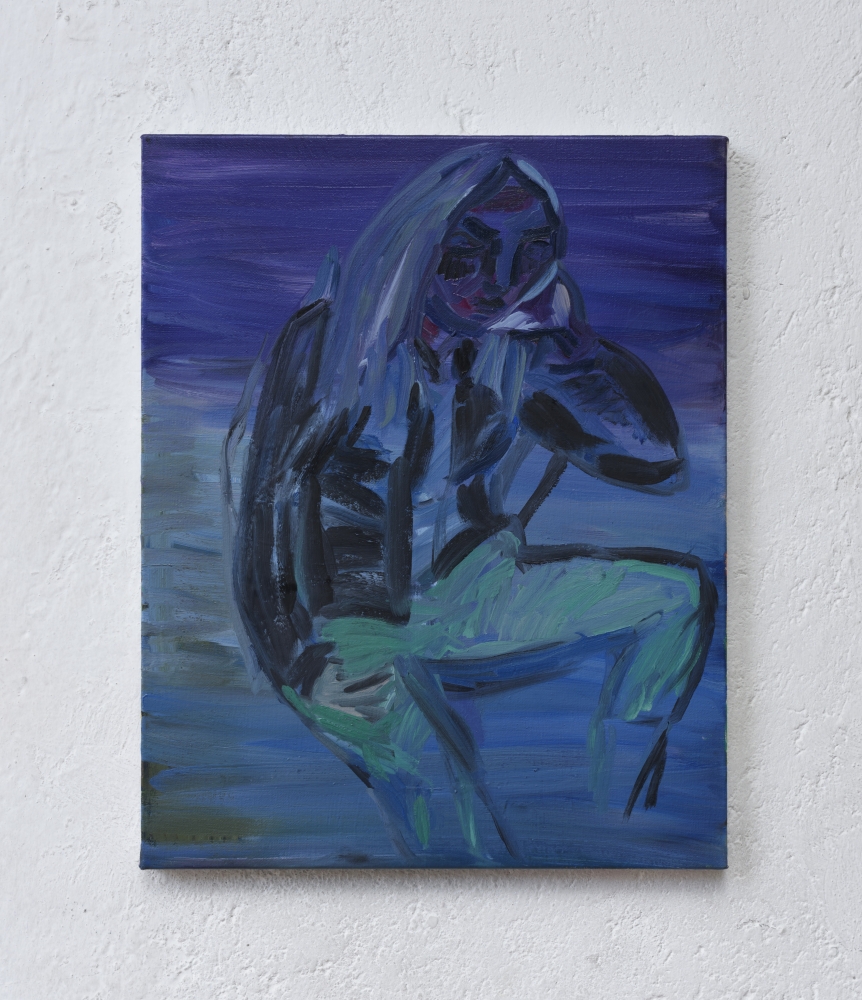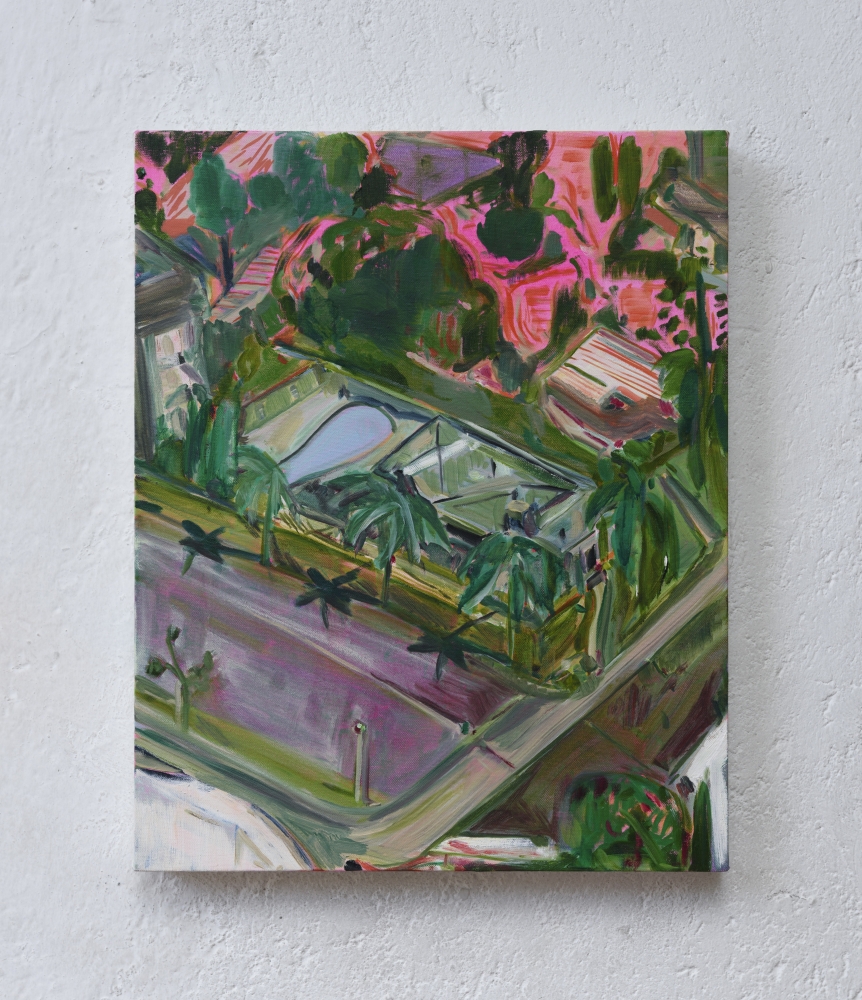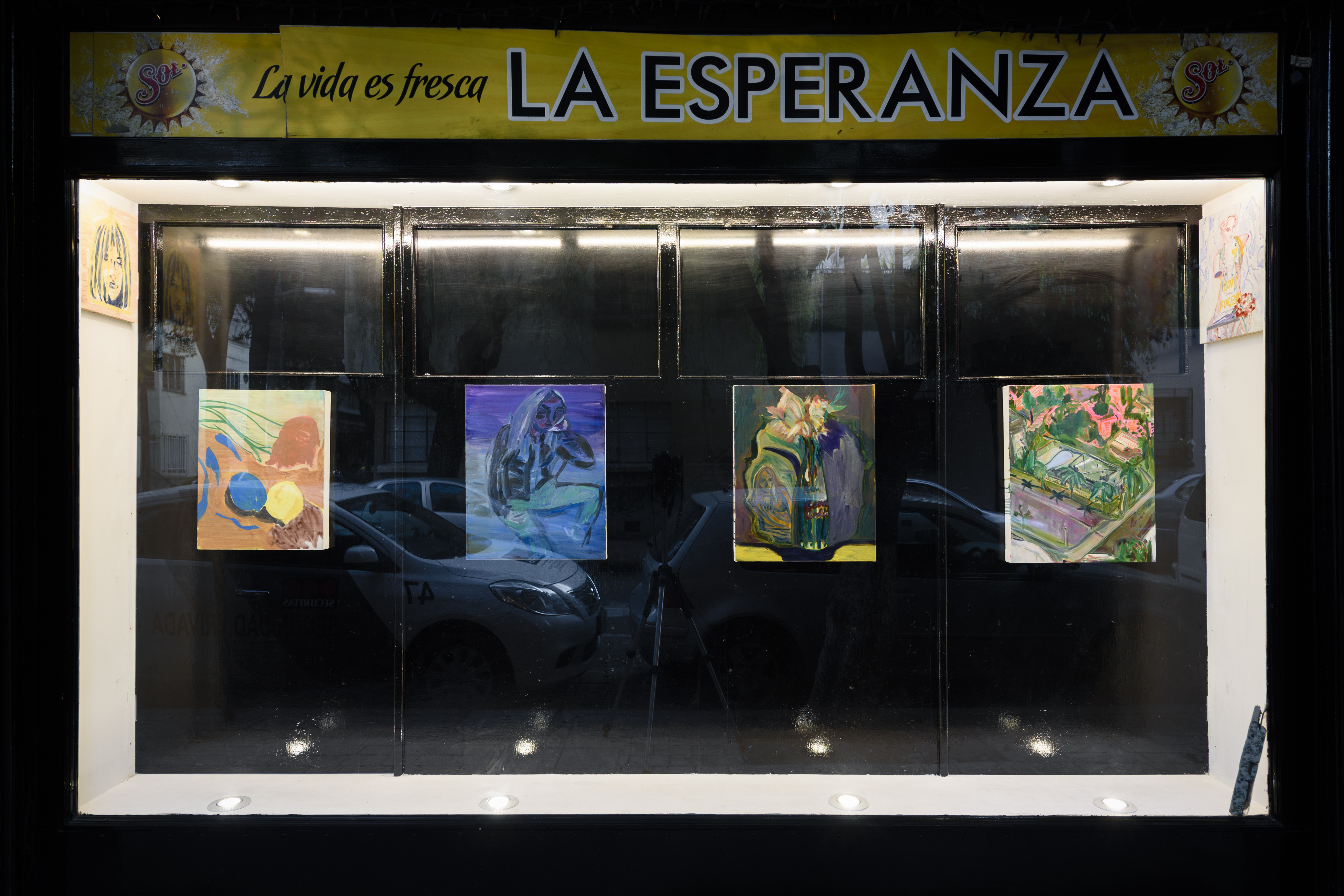Jessica Williams
Realm of the Real
Jessica Williams by Casey Jane Ellison
Jessica Williams’ solo painting show opened in Mexico City this fall at Galería La Esperanza. She is a fast, yet late friend of mine. We met years ago, but recently and rapidly started hanging and talking multiple times a week. Our friendship restarted when I saw her at a group show she was in and while we were talking I became overwhelmed and had to interrupt her, “You make me feel so good.” She busted out laughing and collapsed to the floor while I stood their earnest as I’ve ever been in my entire life. Since then, I've come to rely on her input and experience. She’s an incredibly sensitive and deciphering conversationalist. She listens and responds with mystical yet grounded information and personal experience. I find her paintings to be just as delicate, mystical, and accountable. I interviewed her about her solo show, LA and the multiple realms we live in.
CJE: Tell me about your current show at Galería La Esperanza in Mexico City. I feel the surrealist iconography of great Mexican painters in your work and the depth and magical realism within your palette are Southwest to me. You’re originally from the Valley in LA, are your paintings SoCal or not?
JW: This was my first time showing in Mexico City. When I first received the floor plan for Galería La Esperanza, I saw a window display that’s part of the street, which I thought is an interesting way to exhibit work. And then, it ended up that I chose six paintings, some of which are autobiographical, and others that are street scenes and still lives. I was picturing an interesting story, paintings which are windows into another window, lit by a frame at night. It´s funny you feel the Southwest, I actually haven’t spent much time there! I think my work is more like a state of mind than a specific place.
Are windows important for your paintings?
Definitely. Once a week I take a picture out my bedroom window of the sunset. I do it because it reminds me that windows are about looking. They form the separation between private and public and the imagined public realm. That´s how the title of the show, Realm of the Real, came to be. Windows reminds you of where you are; they are a separation that’s about presence. You´re actively looking, be it in a bedroom or car, the world in Los Angeles is always a private bubble, framed through a window the scale of a human being. But in Mexico, I feel you never know if you´re inside or outside.
Is your bedroom important to your painting?
Yes, it’s the space of the known. We spend half our time dreaming in our rooms, so the bedroom is the space of the self, still unknown to the self. There’s a lot of subconscious dimension all around you, mixed with the everydayness of organizing your space, with these collections and material possessions of meaning. When things get rearranged, that’s what painting is. It’s a negotiation, like finding or pushing through something. It´s like listening to song you´ve heard a hundred times, and then it breaks, and suddenly it’s a story you never heard before. The drive to paint is a way to organize thought in chaos. For me, painting is a mode of thought and an emotional compulsion. In a microscopic way, your bedroom is also doing that with objects.
How do you begin a painting? Is it a tense experience for you?
If an idea lingers, I’ll paint it and see if it translates. For example, when I conceived of my painting in the exhibition Blue Lemon, I’d been looking at 17th century Dutch Vanitas paintings. They are still lives, where the subject of death is articulated through symbolic objects, decaying fruit, or flowers, or skulls, usually all at once. That summer I’d traveled to Eastern Europe (where my grandfather was from), and was taking pictures of my everyday, mostly domestic scenes. They were pre-iPhone, really blurry Blackberry photos… and when I got back to Los Angeles, I had these super painterly photos of dried fish, peeled lemons and pink peonies, straight out of a Manet, but linked to the nostalgia following me. I wanted to play with this idea, using blue and highlighting the subjective nature of seeing, and see how objects resonate emotionally. Color was the amphetamine to charge it all up.
I heard the safe word for your after party was ¨ blue lemon.¨
(Laughs) Only three people used it! The party was the time of my young life. People in Mexico are wonderful. It was super special. I think I learned how to dance salsa.
When you told me you painted a portrait of me, that was included in the show, my heart exploded, but I was also shocked. I didn’t know you felt or thought about me that way. What is that way exactly?
Well, I’d been reading Greil Marcus’ “The History of Rock and Roll in 10 Songs” – which is incredible, there is an entire chapter on the 1960’s song “Shake Some Action,” – and later I was looking through a book of Matisse’s paintings, and there was one portrait that I realized had a uniquely Casey quality, a self–assurance and intensity of thought that’s specific. I recognized you in a painting I’ve seen a hundred times, but saw it had found a new voice, and also I knew that I had to paint you.
To me, your subjects and scenes feel personal, immediate and physically close to you. What are you exploring in this coziness?
I want my paintings to be vulnerable like humans. Intimacy is a big part of it. The process of painting slows down time, circles around experience and retraces memory. It’s a very anti-capitalistic space where I record my immediate surroundings within our hyper info-maniac culture. My sense is that in a world so thoroughly mapped and represented, art must stage an intervention of subjective observation. Of course, the personal has a lot to do with this—I know all of my subjects very well.
Your paintings don’t flex the use of light, do they? What do you flex?
I learned from the French painter Henri Rousseau that by using my own type of light, it announces that the paintings exist in their own realm. It underscores the fact that an image is never natural and speaks to its staging. So maybe it’s a “low-light flexing,” a dream space with candles, reflected rather than direct. I’ll often take photos of cast shadows because with the absence of light, you notice the shape in its place.
Why is the palette of some paintings muddier than others? Are they different from each other in your mind?
A muddy palette describes a state of mind: thoughts emerging and disappearing, dust settling over time. Every painting is singular yet connected through color. For me, colors are emotional states and together they create the unique atmosphere linking my work together.
Are colors in Mexico different?
Yes, the surfaces are nuanced; they feel tertiary and touched, you can feel time and history standing still. In Los Angeles, by comparison, every pore breathes newness and Hollywood novelties.
There’s a magical thing nobody mentions about Los Angeles: The Jewish girls. For example, people probably assume you´re from New York, like me. Are your paintings essentially Los Angeles / Jewish?
It would be impossible to say no because I’m Jewish and a fourth generation Angelino, so the experience of living in Los Angeles profoundly effects my ideas. I love the Valley, it´s both incredibly banal strip mall suburbia and lush hillside up to Mulholland Drive. People in Los Angeles mostly imagine “the valley” without going there all that much, and I like that it still has a feeling of being far away despite that not being true geographically.
Is your painting an autobiography?
It’s a place to imagine various autobiographies and a space to open thoughts up in ways that language escapes. It has a certain authority that makes painting uniquely itself.
What was the first artwork that affected you?
“The Prisoner” by Marie Laurencin. The girl looks so lonely and isolated behind the curtain, but I also loved the colors and thought it was a beautiful painting. I think I recognized myself in it.
Do you believe in the afterlife? Do you believe there are other realms living simultaneously with us on earth?
I think in certain atmospheric conditions the afterlife becomes felt and even visible… so yes, I do believe in the afterlife!
Are you ever coming back to Mexico?
As soon as possible.
Works

Blue Lemon
Artist: Jessica Williams
Year: 2013
Technique: Oil on canvas
Dimensions: 14 x 18 inches

Casey Jane
Artist: Jessica Williams
Year: 2016
Technique: Oil on canvas
Dimensions: 16 x 20 inches

Long Farewell To A Friend
Artist: Jessica Williams
Year: 2016
Technique: Oil on canvas
Dimensions: 16 x 20 inches

Pink Palms
Artist: Jessica Williams
Year: 2013
Technique: Oil on canvas
Dimensions: 16 x 20 inches

Sylvia (The Bell Jar)
Artist: Jessica Williams
Year: 2014
Technique: Oil on panel
Dimensions: 9 x 12 inches

The melancholy of Time
Artist: Jessica Williams
Year: 2011
Technique: Oil on panel
Dimensions: 11 x 14 inches
Archivo:
- José Eduardo Barajas, house painting tips (jerusalem) (01.12.2018 – 06.01.2019)
- Chavis Mármol, Mordido por un perro rabioso (20.09.2018 – 03.11.2018)
- Carlos Martínez, como mi boca que ha quemado el cielo (04.08.2018 – 02.09.2018)
- Liz Mevill, Ser artista es igual a ser una secretaria (13.04.2018 – 25.05.2018)
- Santiago Marín, Sobre las cosas resplandecientes (09.12.2017 – 20.01.2018)
- Bruno Darío, ¿HACIA DÓNDE MIRA EL PRINCIPIO DEL MAR? (28.10.2017 – 25.11.2017)
- Marti Guerrero, Tim Comix (05.10.2017 – 21.10.2017)
- Chelsea Culprit, RIGHT TO REMAIN ELEGANT (26.05.2017 – 03.06.2017)
- Diego Salvador Rios, अव (04.04.2017 – 29.04.2017)
- Bill Hayden & Sam Pulitzer, Lixxxtapussy Walls 2k13 (07.02.2017 – 11.03.2017)
- Txema Novelo, ESM (Earth Sun Moon) (14.01.2017 – 28.01.2017)
- Sergio Heredia, Pedacería (17.12.2016 – 12.01.2017)
- Jessica Williams, Realm of the Real (17.11.2016 – 14.12.2016)
- preteen gallery, TOUCHING HANDS WITH SOMEONE SERIOUSLY BEAUTIFUL (23.09.2016 – 29.10.2016)
- PJ Rountree, Terms, 2009-2016 (04.07.2016 – 10.09.2016)
